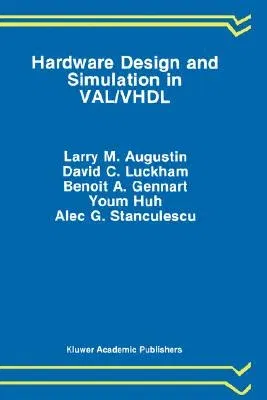Larry M Augustin
(Author)Hardware Design and Simulation in Val/VHDL (1991)Hardcover - 1991, 31 October 1990

Qty
1
Turbo
Ships in 2 - 3 days
In Stock
Free Delivery
Cash on Delivery
15 Days
Free Returns
Secure Checkout

Part of Series
The Springer International Engineering and Computer Science
Part of Series
Kluwer International Series in Engineering & Computer Science
Part of Series
International Series in Engineering and Computer Science
Part of Series
Knowledge Representation, Learning, and Expert Systems
Part of Series
Kluwer International Series in Engineering and Computer Scie
Part of Series
Springer International Series in Engineering and Computer Sc
Print Length
322 pages
Language
English
Publisher
Springer
Date Published
31 Oct 1990
ISBN-10
0792390873
ISBN-13
9780792390879
Description
Product Details
Book Edition:
1991
Book Format:
Hardcover
Country of Origin:
US
Date Published:
31 October 1990
Dimensions:
23.39 x
15.6 x
2.06 cm
ISBN-10:
0792390873
ISBN-13:
9780792390879
Language:
English
Location:
New York, NY
Pages:
322
Publisher:
Series:
The Springer International Engineering and Computer ScienceKluwer International Series in Engineering & Computer ScienceInternational Series in Engineering and Computer ScienceKnowledge Representation, Learning, and Expert SystemsKluwer International Series in Engineering and Computer ScieSpringer International Series in Engineering and Computer Sc
Weight:
671.32 gm